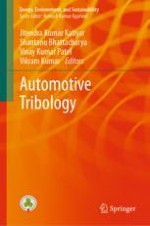2019 | OriginalPaper | Chapter
16. Applications of Tribology on Engine Performance
Authors : Sangeeta Das, Shubhajit Das
Published in: Automotive Tribology
Publisher: Springer Singapore
Activate our intelligent search to find suitable subject content or patents.
Select sections of text to find matching patents with Artificial Intelligence. powered by
Select sections of text to find additional relevant content using AI-assisted search. powered by
